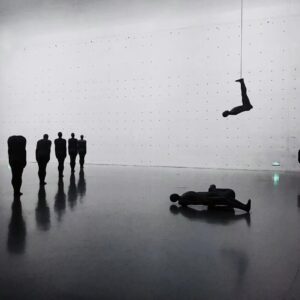Anthony Gormley Gormley has always explored the relationship between the human body and space. His most iconic work is a model of himself, enclosed in plaster for over an hour, during which he is in darkness, in solitude, in a sense of being alone in the world. He is in a void. He thinks about the connection and meaning between life, space and the body. Of course it is also a practice for him, a deep dialogue between himself and his work.
I am not surprised to see him in the Manchester Art Gallery as a leading contemporary British sculptor. He has been at the forefront of Western sculpture and has given it a new lease of life. Through a series of ‘portrait’ creations he has broken the spatial and temporal limitations of the medium of sculpture and taken them out of galleries and galleries and into social spaces, creating a dialogue.
One of the key elements of his work is solitude, which is the paradox of Antinori’s life; he is a very social person, but he can still contemplate in his work the ultimate loneliness common to all human beings.
The two pictures below are of the Gormley sculptures I visited in the Long Museum in Shanghai in 2017, and a sense of isolation accompanied me throughout this hour of my visit to the exhibition.
His sculptures are placed at different angles in different locations, the
standing still.
scrutinised, a group of expressionless iron statues as if naked and unattached.
After all these years, his work still gives me the power to contemplate in silence.


